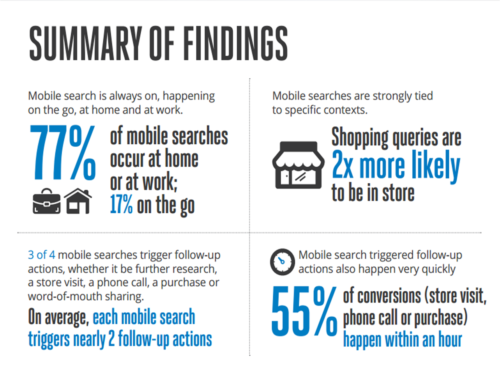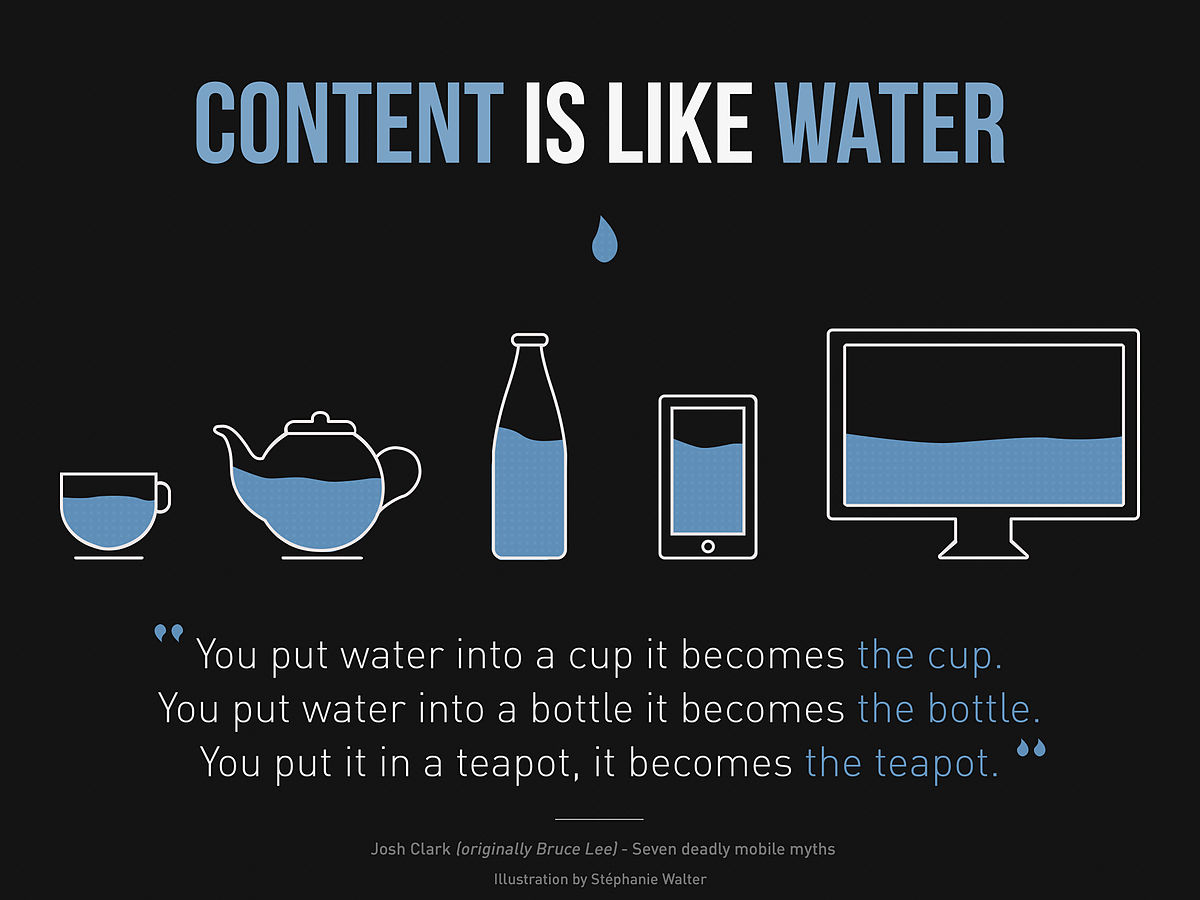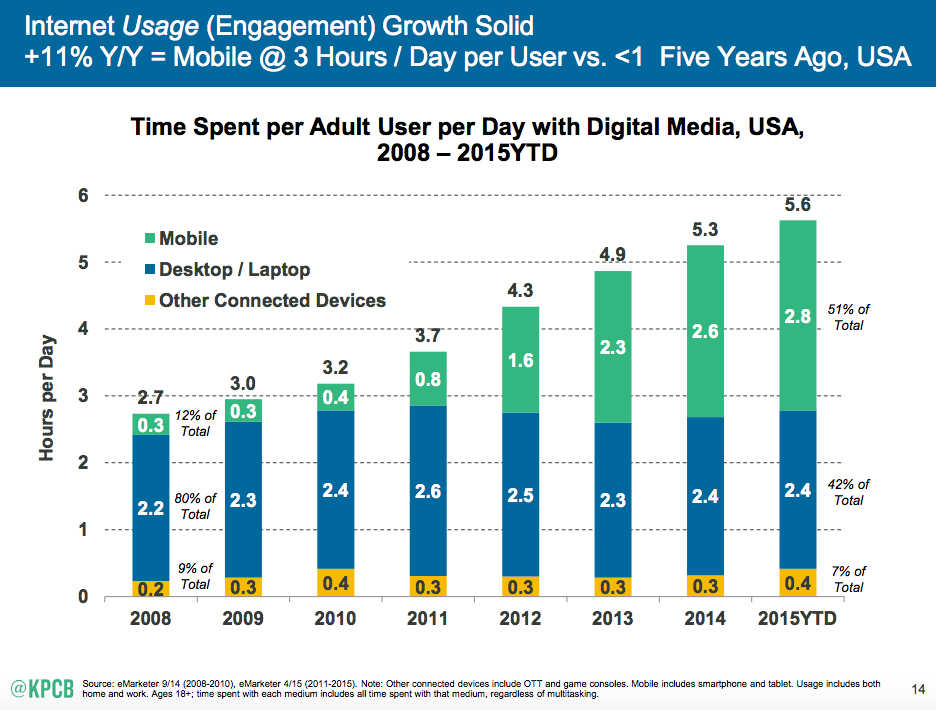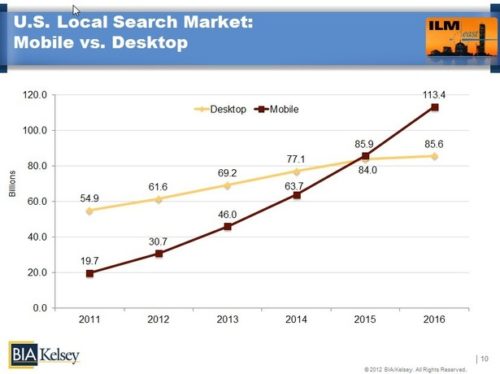Most people were using Google on their mobile devices, but Google’s ranking systems were based around the desktop not mobile SEO.
The solution — mobile-first indexing — has changed the world. We’re never going back to the days of optimizing search for desktop only. It is now all about mobile SEO
So what does this mean for you? As it turns out, there are a lot of implications. You might have to make some serious changes to your site if you want to even have a shot at ranking well.
In this article, I’ll go over exactly what the mobile-first index is, what it looks for, and how you can rank well by keeping it in mind.
3 out of every 5 searches happen on mobile, and mobile far outpaces desktop as the number one method of searching.
That datapoint in itself is reason enough to move to a mobile-first indexing approach.
But there’s more. It used to be that mobile searches happened by people, out and about, on the go, away from home.
Not anymore. A full 77% of mobile searches now happen at home or work.
So what do these users do after they search on their mobile devices?
They shop, of course. According to Digital-Stats, 75% of mobile searches produce at least two follow-up actions.

mobile seo
How to Improve Your Rankings with Mobile-First Indexing
SEO is all about one thing — helping the right people find the right stuff online.
This has been my obsession for more than ten years now. I want to figure out the best ways to do just that.
Not many people realize this, but a few years ago, I felt like I had hit a wall in my knowledge of SEO.
I had spent years trying to figure it all out — the algorithms, the linkbuilding, the content optimization, the technical optimization.
I felt like I had a good handle on things. Sure, I could always be improving on my knowledge.
But honestly, it was quite discouraging.
It was kind of like the feeling you get when you graduate college or high school. You’ve waited so long for this day, and then you’re like “Oh, so this is what it feels like?”
It wasn’t that I had mastered everything about SEO. It was just that I knew most of what there was to know.
End of story.
Boring.
Discouraging.
And then, BOOM! Everything changed.
I should have seen it coming. Mobile was dominating, and finally, Google pulled out all the stops.
SEO changed forever.
There have been several huge SEO changes over the years. We all know about Panda and Penguin, but the big consumer-facing changes may have an even bigger impact — like Google’s Knowledge Graph.
The biggest change of all, however, has been the mobile revolution.
That’s when my SEO knowledge went from, “I’m comfortable with this stuff” to “I have no idea what I’m doing!”
Google announced its mobile-first index in November 2016 because they were trying to solve a problem.
Most people were using Google on their mobile devices, but Google’s ranking systems were based around the desktop.
The solution — mobile-first indexing — changed the world. We’re never going back to the days of optimizing search for desktop only.
So what does this mean for you? As it turns out, there are a lot of implications. You might have to make some serious changes to your site if you want to even have a shot at ranking well.
In this article, I’ll go over exactly what the mobile-first index is, what it looks for, and how you can rank well by keeping it in mind.
Why this massive shift towards mobile-first indexing?
In case you missed it, mobile is the new normal.
3 out of every 5 searches happen on mobile, and mobile far outpaces desktop as the number one method of searching.

mobile seo
That datapoint in itself is reason enough to move to a mobile-first indexing approach.
But there’s more. It used to be that mobile searches happened by people, out and about, on the go, away from home.
Not anymore. A full 77% of mobile searches now happen at home or work.
So what do these users do after they search on their mobile devices?
They shop, of course. According to Digital-Stats, 75% of mobile searches produce at least two follow-up actions.
In other words, they convert. And what conversion rates they are!
According to one infographic, the conversion rate for visiting or purchasing is a whopping 90%.
All this mobile searching leads to real results, real action, and real revenue for millions of businesses.
It’s not just statistics. This is real life.

mobile seo
An in-depth look at the mobile-first index
Here’s what the official post from Google Webmasters has to say about the mobile-first index. Hang on, because this is a big paragraph.
To make our results more useful, we’ve begun experiments to make our index mobile-first. Although our search index will continue to be a single index of websites and apps, our algorithms will eventually primarily use the mobile version of a site’s content to rank pages from that site, to understand structured data, and to show snippets from those pages in our results. Of course, while our index will be built from mobile documents, we’re going to continue to build a great search experience for all users, whether they come from mobile or desktop devices.
Mobile-first indexing is pretty much what it sounds like. From now on, Google will primarily consider the mobile version of your site to rank it in Google (both the mobile and desktop versions).
That means if you have a site optimized for mobile, you’ll rank well on both mobile and desktop.
On the other hand, if your site doesn’t perform well on mobile, your rankings will sink on both mobile and desktop.
This is a bold move by Google. Bold, but necessary.
While almost all marketers and SEOs have prioritized mobile content, it’s more important now than ever before to focus on mobile.
In short, to rank well on Google with the mobile-first index, you need one important ingredient: a responsive mobile-optimized site. (We’ll dive into this later on.)
This doesn’t mean that all non-mobile SEO is for nothing, but in the coming years, mobile SEO will probably be the only thing marketers and SEOs will focus on.
The mobile-first index is still rolling out, but we’re seeing its impact already.
In the next several months, Google will probably finish the release, so it’s possible that the mobile-first index will be everywhere by the end of 2017.
What the mobile-first index looks for
It’s obvious that the mobile-first index favors mobile-friendly content. But let’s qualify that statement a little.
Jayson DeMers gave a great definition of what Google considers to be mobile-friendly.
Google just cares that people will be able to load all pieces of content on your page, read the text without having to zoom or scroll, and interact with any buttons present.
Generally, mobile-friendliness has the following characteristics:
- Responsive design (i.e., site design that changes depending on the size of the screen it’s being viewed on)
- Ease of use on a mobile device
- Site speed
- Good interstitials
Responsive design is a big must-have. It’s Google’s preferred type of site design, and it’s safe to say that responsive sites will do really well in the mobile-first index.
A great mobile site should look nice, be easy to navigate, and display well on a mobile device. Etsy is a perfect example:

Evernote also has a wonderful mobile site:

mobile seo
Both sites fit all of the criteria: they look nice, they’re easy to navigate, and they display well on mobile.
These are the same characteristics your mobile site should have. If you’re lacking one or more of these features, your ranking could plummet.
Depending on the current state of your mobile site, you may need to create a completely new mobile site from scratch or simply make a few changes to your existing site.
Here’s a checklist of everything you need to do to prepare for the mobile-first index.
1. Use responsive design
This is by far the most important thing you need to do to rank well on the mobile-first index.
Responsive sites are essentially two-for-one value. They rank well on both mobile and desktop because the design changes to fit the size of the screen.
I like the way that Bruce Lee…I mean John Clark…defined responsive design.

mobile seo
Before we go any further, I should make an important clarification: All responsive sites are mobile-friendly, but not all mobile-friendly sites are responsive.
Let’s look at what “responsive” and “mobile-friendly” mean. A great article by Atomic74 breaks down the terms like this:
Responsive: Changes based on the size of the screen/type of device being used
Mobile-friendly: Works the same way across devices
2. Optimize your content for mobile
I’ve seen too many sites that claim to be mobile-friendly, but their content is definitely not.
I think there’s a big difference between what most people think is mobile-friendly and what is actually mobile-friendly.

mobile seo
That’s especially true when it comes to content. Your mobile visitors need to have the same great content experience that desktop visitors are having.
The fact is, there’s a good chance that most of your visitors are accessing your site through mobile as it is.
American adults spend more of their Internet time on a mobile device than a desktop device.

mobile seo
Thus, all their searching, interacting, and content consumption is happening in a mobile context.
It logically follows from a mobile-first indexing standpoint that your content should be produced with mobile-first users in mind.
Here are some important steps you need to take to make sure your mobile visitors are fully experiencing your content.
Rethink your articles. As HubSpot points out, a 3,000-word blog post looks great on a desktop, but it can be intimidating on a mobile device.
If you post long-form content like me, try using shorter paragraphs and then breaking those paragraphs up with media (like infographics and screenshots).
Ever wonder why my paragraphs are so short?
Because a lot of my readers are mobile readers. I want them to be able to read this text just as easily as the non-mobile readers.
Now if you tend to post shorter content, you don’t have a lot to worry about. Just make sure the content is nicely formatted for mobile screens.
Use multiple types of content. Audio and video perform exceptionally well in mobile environments. If you have a good combination of written content and audio or video, your mobile users will have a much better experience.
3. Create a mobile-first strategy
Lots of site owners are still living in a desktop-first world. They create everything with the desktop in mind and then transfer it over to mobile.
But that doesn’t fit the world we live in.
According to Smart Insights, mobile Internet use makes up 51% of total Internet use. Mobile use has officially overtaken desktop use, and it’s important to focus on that.

mobile seo
From now on, consider mobile environments first. Most of what looks good on mobile will look good on desktop.
But what if you don’t have a mobile site?
Many of you are probably thinking, “I don’t have a mobile site. What will happen?”
In short, nothing.
But that doesn’t mean your ranking isn’t suffering. Quite the opposite.
Let me explain. If you don’t have a mobile site, Google will just use your desktop version to rank your site.
Google already has a bias against sites that aren’t mobile-friendly.
So that means that if your site isn’t mobile-friendly now, it’s already taking a hit. Google has prioritized mobile-friendly content, and this official indexing move is just making it more official.
Mobile Internet usage has been climbing steadily over the last few years. Google has seen that and adjusted their ranking systems accordingly.
So your site is already being judged on its mobile-friendliness or lack thereof.
In my opinion, it’s not worth it to stick with just a desktop version now. Even if you’re ranking pretty well, you could lose to sites that may not be as good as yours but that are mobile-friendly.
In other words, having a mobile-friendly site might mean the difference between ranking well or sinking in the SERPs.
Conclusion
Creating a mobile-first experience is more important now than ever before.
Let me reiterate one statistic from earlier: Mobile Internet use makes up 51% of total Internet use.
You can’t afford to ignore mobile optimization any longer. Google has already been prioritizing mobile-friendly sites, so if you don’t have one, I’d recommend doing that as soon as possible.
Like I said, your best bet is a responsive site. It takes care of both the desktop and mobile user experiences in a single move.
Don’t let the lack of a mobile-first experience stop you from ranking well. If you take the time now to focus on making your mobile site great, you’ll be able to rank better and give users a better experience.
What are your thoughts on mobile-first indexing? What changes have you implemented as a result?



